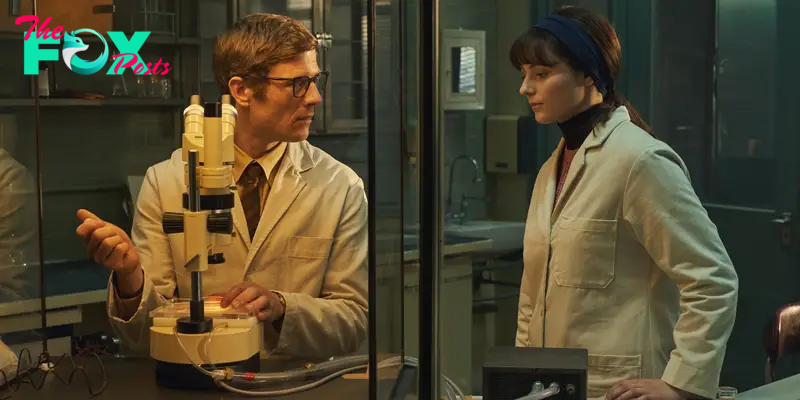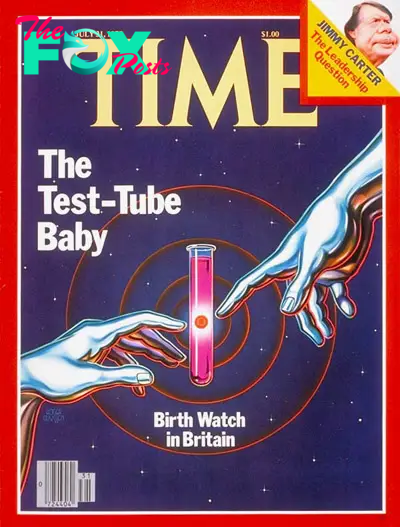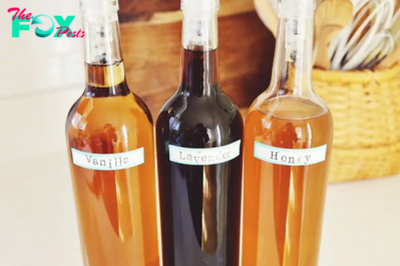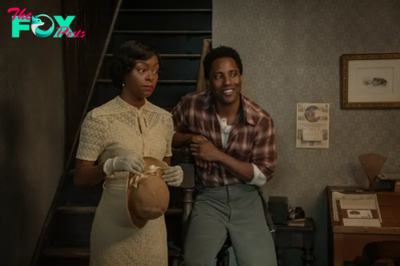Entertainment
The Real Story of Jean Purdy, Whose Work Developing IVF Is Portrayed in Netflix’s Joy
The film Joy, out on Netflix Nov. 22, follows what went into the landmark development of in-vitro fertilization, with a focus on one woman who helped pioneer the treatment.
Joy is at once about IVF as it is about Jean Purdy (Thomasin McKenzie), a nurse who was part of the team that facilitated the birth of Louise Brown, the first “test tube” baby, along with the physiologist Robert Edwards (James Norton) and Patrick Steptoe (Bill Nighy), a pioneer of laparoscopy in gynecology in the UK.
The film depicts Purdy as suffering from a case of endometriosis that prevents her from becoming pregnant. This pushes her to devote her life to helping other women get pregnant.
It’s not clear whether the real Purdy decided to pursue IVF research because of her own Health. But she was undoubtedly pivotal to making IVF a possibility—and known to be dedicated to her patients, as Joy shows.
Here, screenwriters and people who knew Purdy on both a professional and personal level talk to TIME about the real woman who inspired Joy.
Jean Purdy’s role in IVF

Just as Edwards and Steptoe are known as the “fathers” of IVF, and Purdy was “the mother of IVF,” says Barry Bavister, a scientist who knew Purdy. (Bavister gets a shout-out in the movie because of his work attempting IVF with hamsters.)
Purdy, both in real life and as seen in the movie, organized laboratory supplies, which involves sterile techniques and infection control, and she was responsible for making the culture medium, the fluid that stores the sperm and egg to keep them alive.
Purdy also took meticulous notes on the details of each case, which enabled her male colleagues to do their work. Steptoe and Edwards handled the Science and the vision, “but she was the one who had the dedicated practical expertise to make it happen in the lab,” says Kay Elder, a research scientist at the Bourn Hall fertility clinic, who analyzed Purdy’s laboratory notebooks with reproductive Science professor Martin H. Johnson in 2015.
Bavister describes Purdy as “an equal partner” with Steptoe and Edwards, and says she motivated them to stay the course with their research despite numerous setbacks. He remembers asking Purdy one day why she was dedicating her life to developing IVF even when the research wasn’t going well: “And she said, ‘I just want to look after the babies.’”
Bavister adds: “Edwards, at one point, was ready to give up. He could do IVF, he could make embryos, but they never implanted before 1978…It was Jean who said, ‘We are not giving up. This is going to work.’ And it may have been her dedication that resulted in Louise Brown’s birth.”
Joy also shows Purdy working with patients. While Purdy did not give patients hormone injections, as the movie shows, she did have to collect urine specimens from them and had great bedside manner. Edwards in 1980 described Purdy in one of his writings as being “particularly good with the patients.” According to Elder’s and Johnson’s analysis of her lab notebooks, one patient, Grace MacDonald, described Purdy as “incredible” at making all of the patients feel “relaxed.” In Joy, the patients open up to Purdy, sharing intimate details about their lives with her. Her empathy also comes through in one scene where she organizes a field trip to the beach for the IVF patients, so they can bond with one another.
Though Purdy was more comfortable behind-the-scenes than talking to cameras, Edwards and Steptoe always gave her top-billing on publications. She boasts co-authorship on 26 academic publications like Nature and Lancet, according to a 2017 biography of Purdy in the journal Human Fertility by the scientist Roger Gosden.

In the film, Jean Purdy is so ambitious in the lab that she doesn’t feel like she has time for anything more than a friends-with-benefits relationship. In real life, former colleagues do remember her as fully focused on her job and not as someone who talked about anyone she was dating in the workplace. Elder’s and Johnson’s research finds that she was a devout Christian whose hobbies included listening to classical music records and playing the violin.
Overall, “she was a very private person,” says Elder, who worked at Bourn Hall Clinic with Purdy in the early 1980s, when Purdy served as its technical director. Purdy lived with malignant melanoma for 18 months and didn’t tell any of her colleagues about her condition. Edwards set up a bed for her in the attic of the clinic because she wanted to continue to work up until the end. She died in 1985 at the age of 39. During her career, 370 children were conceived via IVF, and now more than 12 million babies have been conceived via IVF.

The complicated question of Purdy’s endometriosis in Joy
In Joy, Purdy tells Steptoe that she has a severe case of endometriosis. Steptoe offers to examine her, and though Purdy at first declines, insisting that she’s fine, she later accepts the offer. After giving her what looks like a pelvic exam, Steptoe confirms that her case of endometriosis is severe—so severe that she will never be able to have children. When he suggests a remedy to help the pain, she denies that she’s in any pain at all.
The film portrays endometriosis as Purdy’s raison d’etre, that she is determined to help women with her condition become mothers. It is unknown whether Purdy really had endometriosis. The pelvic exam that Steptoe does on Purdy in the movie to evaluate the state of her endometriosis likely wouldn’t have been done in real life at that point in the 1970s, says Fiona Kisby Littleton, an editor of Presenting the First Test-Tube Baby and senior honorary research associate at UCL Institute of Education London, who has seen the film. Littleton says that back then, endometriosis “would have been extremely difficult to diagnose” because it required ultrasound and laparoscopy devices, which weren’t routinely used in the 1970s.
But it’s not out of the question that Purdy had the condition.
Joy’s screenwriters, Jack Thorne and Rachel Mason, say they believe that Purdy did have endometriosis based on a conversation they had with the physiologist Roger Gosden, who worked under Edwards.
When asked whether Purdy had endometriosis, Mason tells TIME, “She did,” adding, “It's really important that women speak up about such things as endometriosis, women's issues. I would like to imagine that she would”—meaning, if Purdy were alive today. For Thorne and Mason, a couple, the story of IVF is personal. They went through seven rounds of IVF before giving birth to a baby boy. Thorne says he hopes that the film will be a conversation starter that encourages families to talk openly about their fertility journeys and any Health matters.
Thorne adds, “we had to believe that she would want the truth of her story told.” Thorne and Mason aimed to tell a story of Purdy’s “struggles with fertility and why that brought her to the work she did.” However, Thorne says, it’s “a tragedy that we can’t ask her” whether or not she had endometriosis.
Gosden, who had not seen Joy before its release on Netflix in the U.S., says that a long time ago, a very close friend of Purdy's—who is now deceased—told him that Jean suffered from acute pain episodes, sometimes requiring hospitalization—which can be a hallmark of endometriosis. “Endometriosis has been assumed to be the cause of a problem that she had over many years,” he says.
But he questions whether Purdy—notably a very private person—would want to be connected with a private gynecological matter—or any personal Health issue—in a film. “I don't think she would want to have been depicted as a victim of a disease,” Gosden says.
Littleton says it’s possible that Purdy will become associated with endometriosis now, whether she had it or not. But she says what viewers should take away from Joy is how well it captures “Jean’s warmth and kindness towards the patients.”
-

 Entertainment1h ago
Entertainment1h agoDonna Kelce’s ‘Holiday Touchdown’ Cameo Includes Sweet Easter Egg to Son Travis: ‘Love You Mommy’
-

 Entertainment4h ago
Entertainment4h agoAmerica On CoffeeWe’re simply inviting you to take a timeout into the rhythmic ambiance of our breakfast, brunch and/or espresso alternatives. We’re comfortable everytime you cease by.Shoe Shoe Shine – The Dynamic Superiors
-

 Entertainment10h ago
Entertainment10h ago3 Completely different Kinds of TV Appearing Roles
-

 Entertainment10h ago
Entertainment10h agoAmerica On CoffeeWe’re simply inviting you to take a timeout into the rhythmic ambiance of our breakfast, brunch and/or espresso alternatives. We’re comfortable everytime you cease by.SYRUPING UP YOUR VERY OWN COFFEE FLAVORS
-

 Entertainment10h ago
Entertainment10h agoMeet Ava, the Golden Tiger Cub in Thailand Set to Be the Next Cute Viral Sensation
-

 Entertainment10h ago
Entertainment10h agoBest Tom Hardy Movies that Are Must-Watch
-

 Entertainment15h ago
Entertainment15h agoThe Smithereens with John Hampson – West Herr Riviera Theatre – North Tonawanda, NY – November 20, 2024
-

 Entertainment21h ago
Entertainment21h agoAmerica On CoffeeWe’re simply inviting you to take a timeout into the rhythmic ambiance of our breakfast, brunch and/or espresso alternatives. We’re comfortable everytime you cease by.Vacation Espresso Cocktail


















